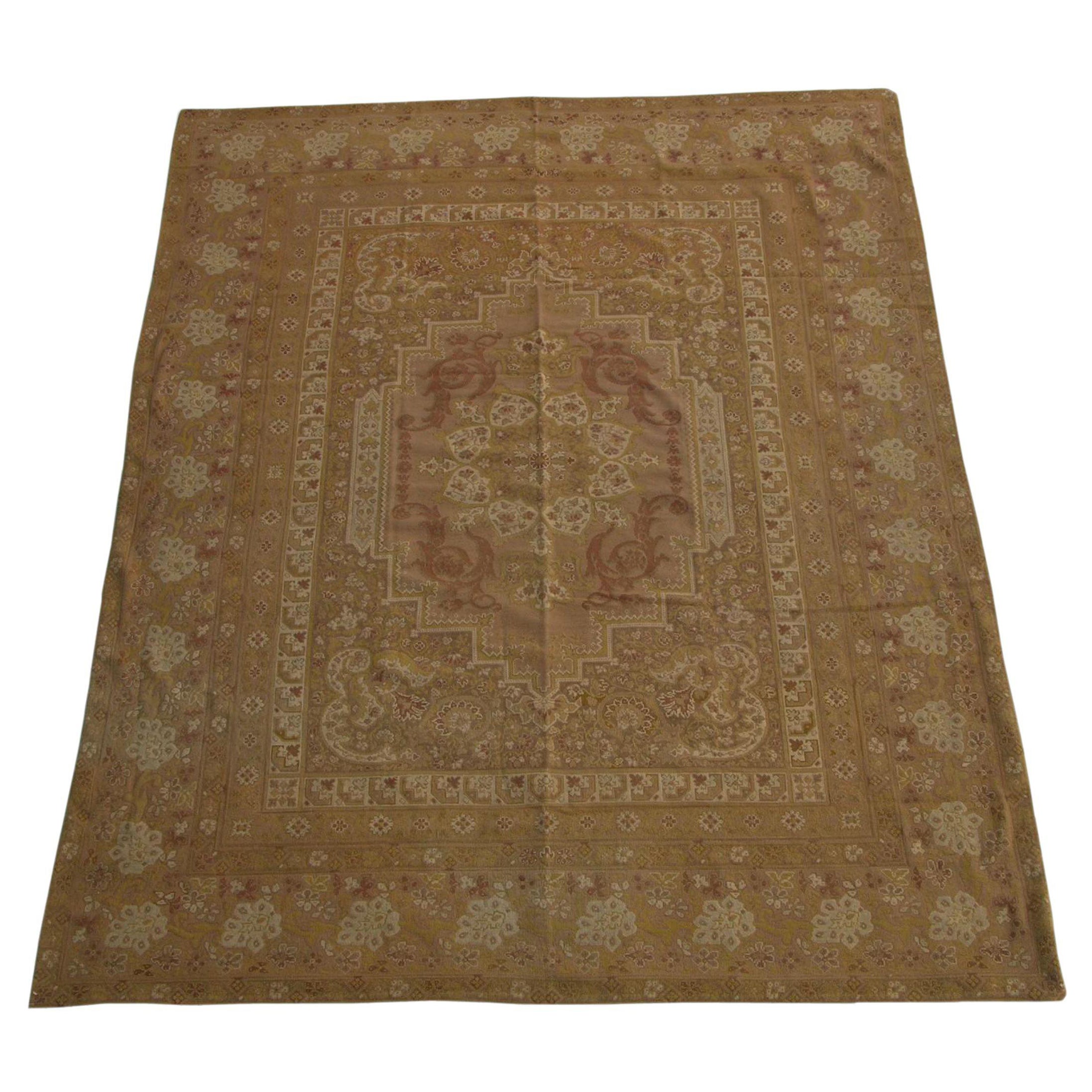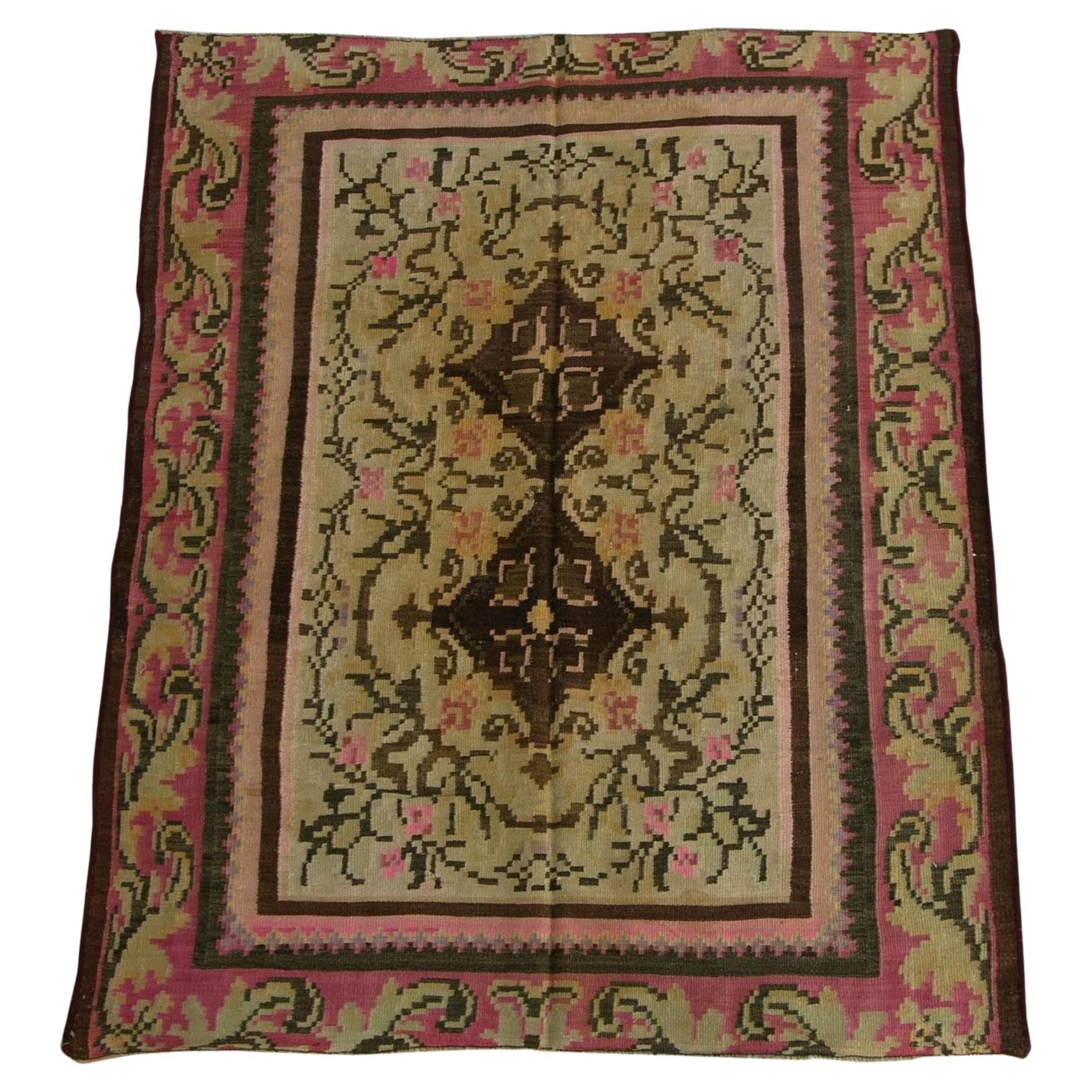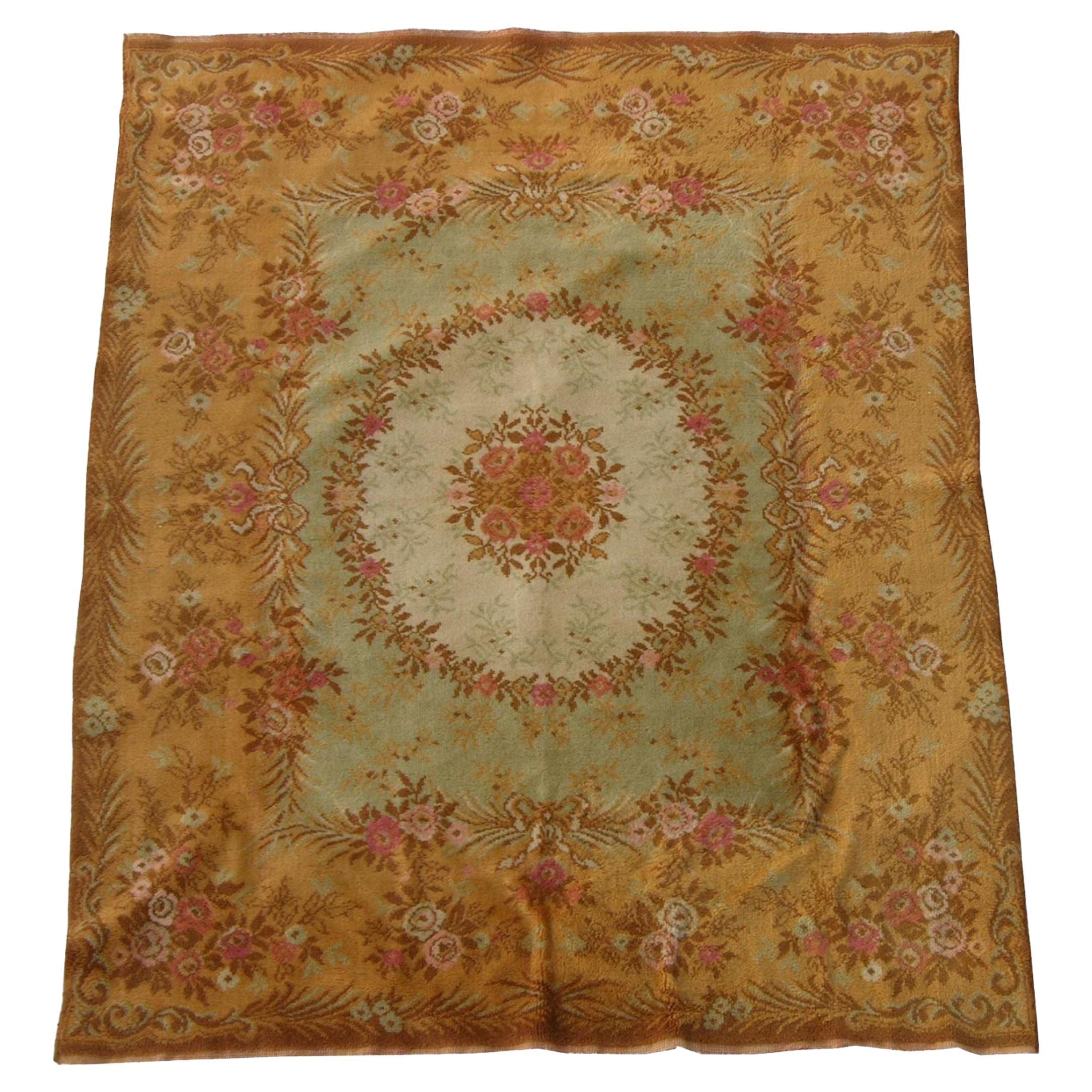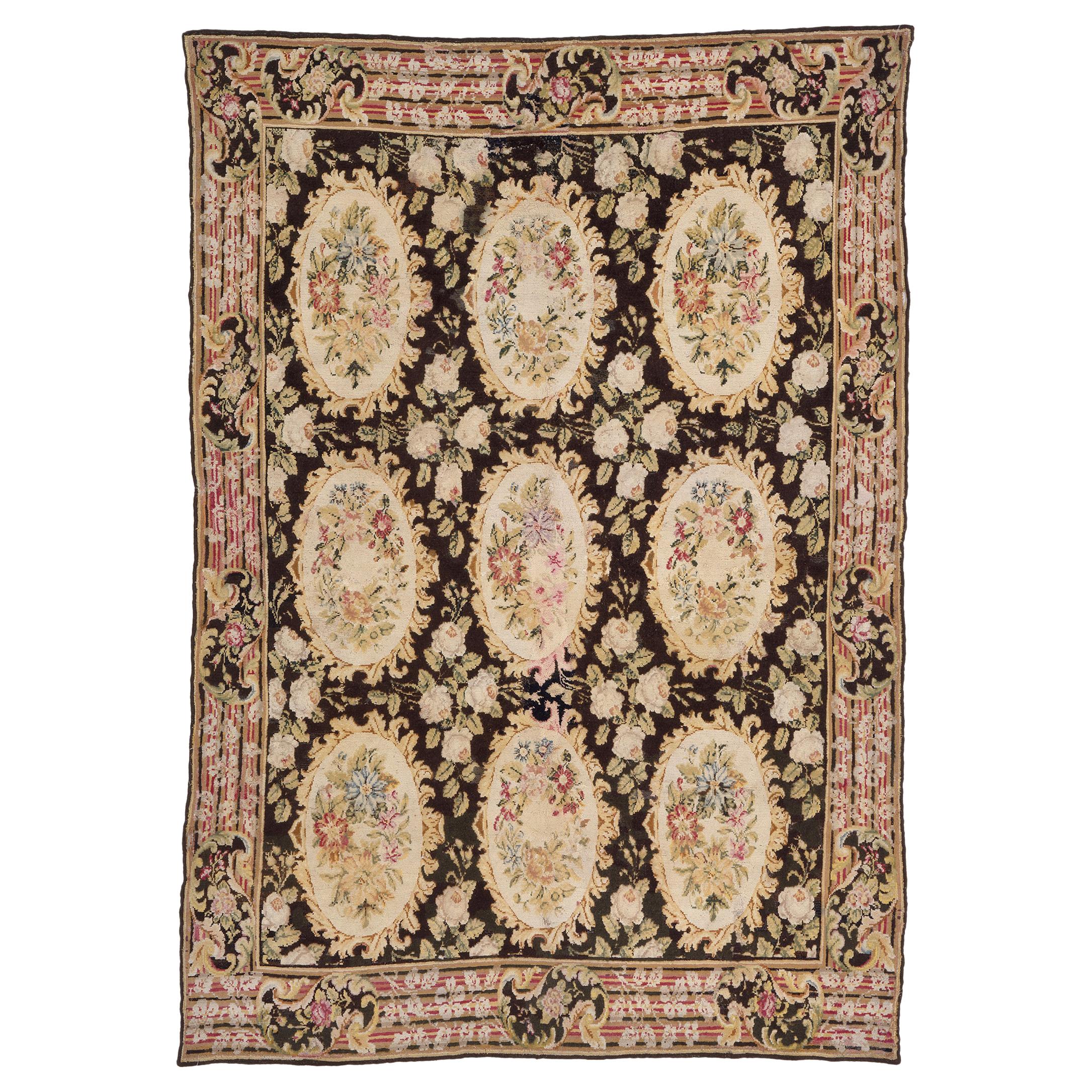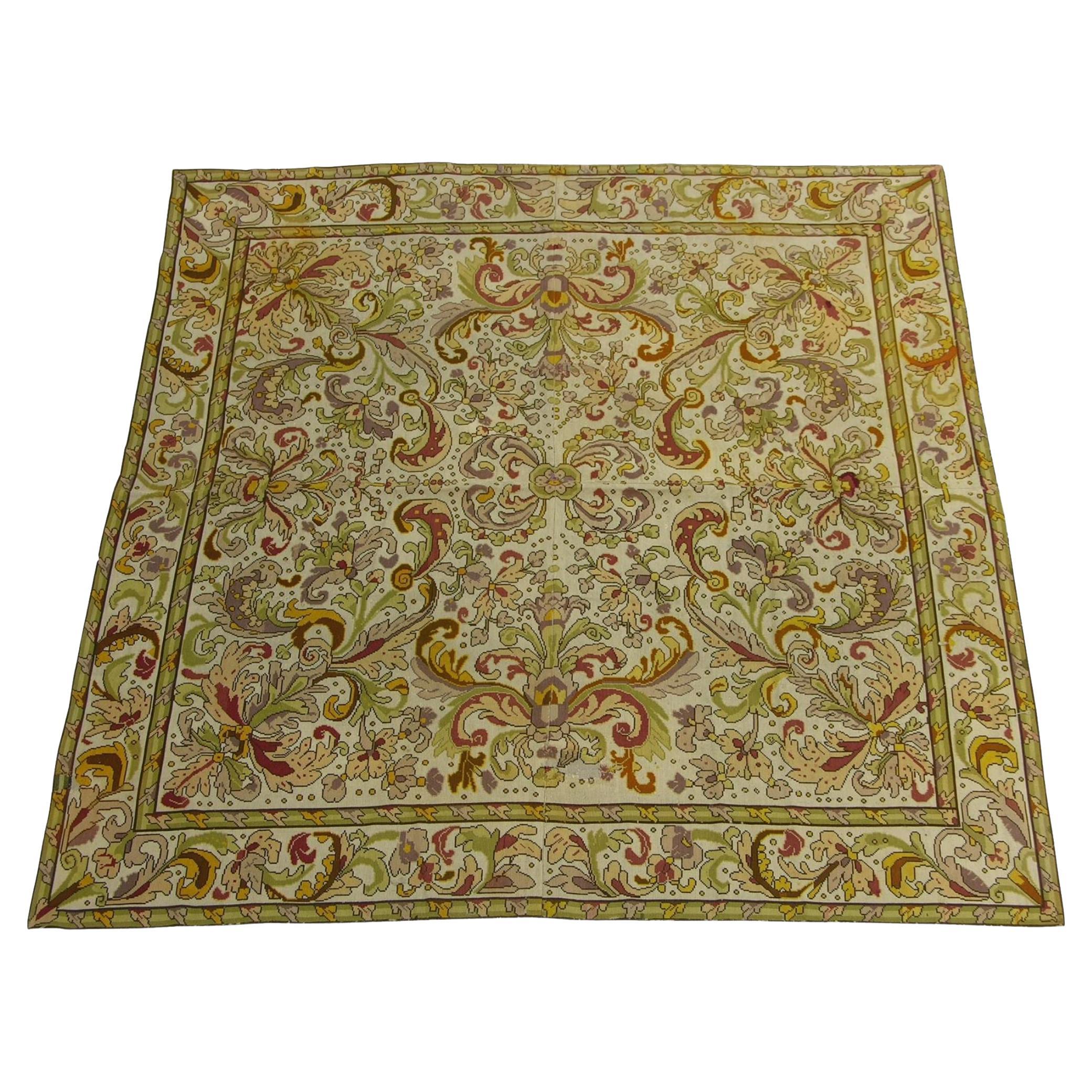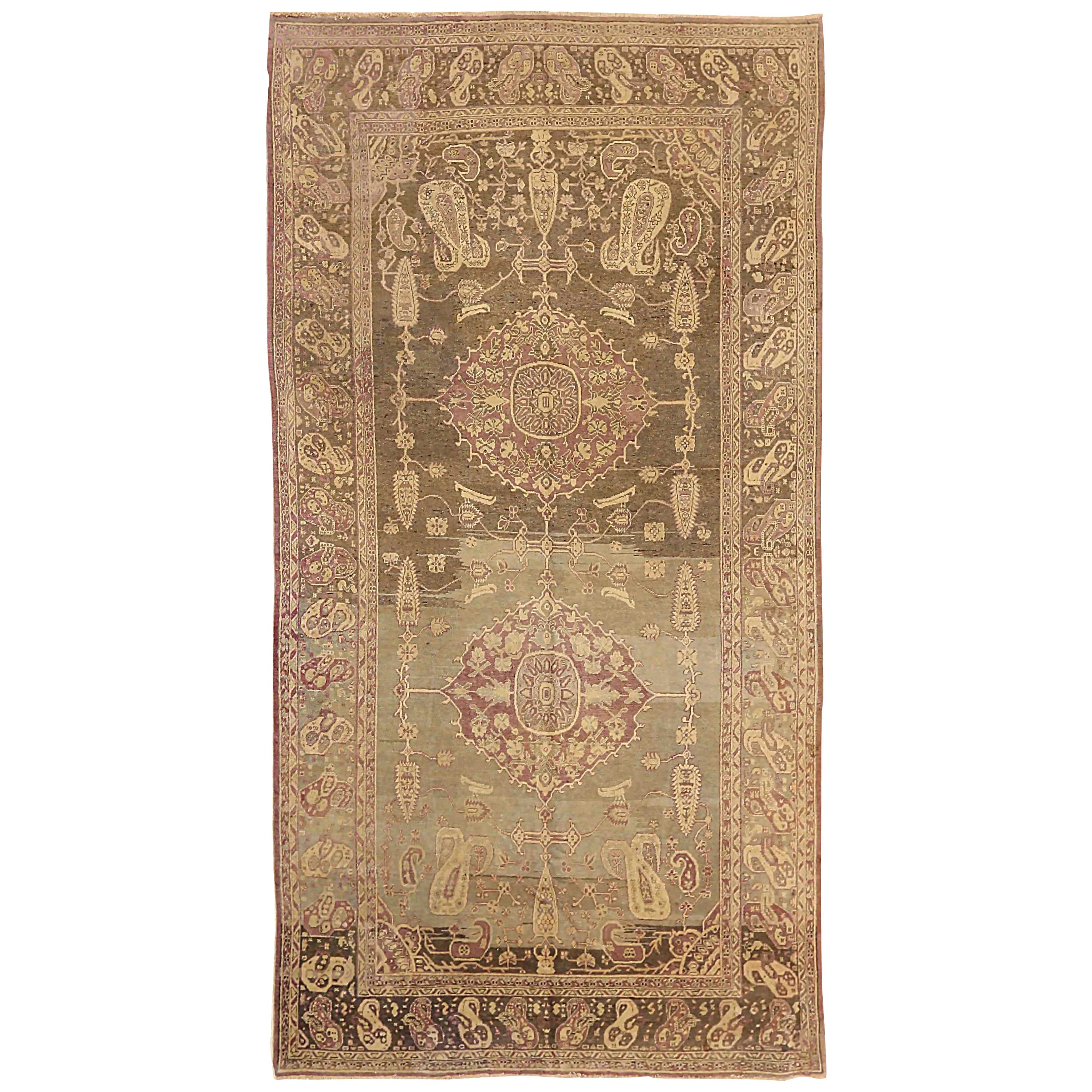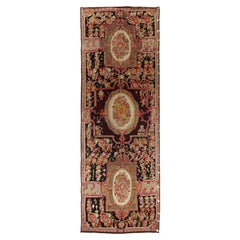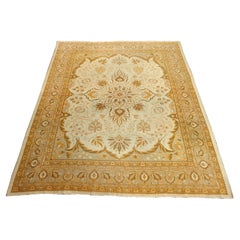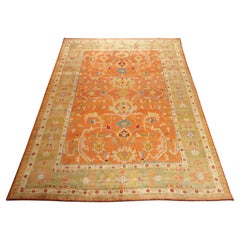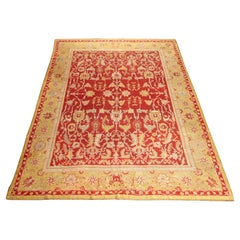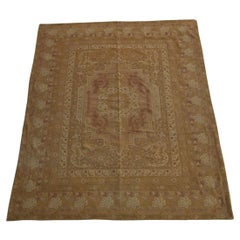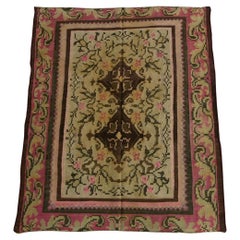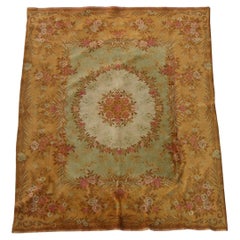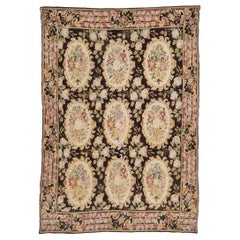Want more images or videos?
Request additional images or videos from the seller
1 of 8
Inscribed Antique Russian Orphan Tapestry
$17,500
£13,168.37
€15,223.64
CA$24,710.50
A$26,793.42
CHF 14,218.95
MX$329,995.06
NOK 176,234.96
SEK 166,325.28
DKK 113,633.01
About the Item
While Europe may not be the birthplace of the art of piled carpet weaving, the art has certainly attracted a wide-enough audience in the continent to warrant the creation of a flourishing carpet weaving industry. Although rugs & carpets were often directly imported to Europe from abroad (mainly from Persia and Anatolia), the shift in tastes of Europeans as well as the industrial revolution of the 1750s led the local populations to establish their own weaving styles, combining both Baroque and Renaissance elements with more traditional Oriental elements of design
In 1895, the Great Duchess Xenia Alexandrovna of Russia (the elder daughter and fourth child of Tsar Alexander III of Russia) commissioned the renowned architect Maxim Karlovich to building the Ksenisky educational and vocational shelter for poor girls in Moscow. Built in industrial gothic style, the utlilitarian building served as an important refuge for orphans impoverished girls in the region.
While in the orphanage, the girls were taught practical handicraft skills in various fields, one of which was weaving tapestries. The present example represents possibly the finest piece that was expertly woven by the girls and presented as a gift to the Great Duchess to express their gratitude to her philantropic efforts.
A large overarching central medallion occupies much of the field and it is adorned with various stylized flowers, leaves, and vines. The border region accentuates the field with 4 imposing spandrels that add depth to the piece. A wonderful mélange of colors of burgundy, aubergine, and gold bring life to the unobtrusive pastel ivory field. At the bottom of the tapestry one may find an inscription simply stating "Shelter of Grand Duchess Xenia Alexndrovna in Moscow".
- Dimensions:Width: 110.24 in (280 cm)Length: 129.93 in (330 cm)
- Style:Renaissance Revival (Of the Period)
- Materials and Techniques:Wool,Hand-Woven
- Place of Origin:
- Period:
- Date of Manufacture:Late 19th Century
- Condition:
- Seller Location:Beirut, LB
- Reference Number:1stDibs: LU7137245840552
About the Seller
No Reviews Yet
Vetted Professional Seller
Every seller passes strict standards for authenticity and reliability
Established in 1979
1stDibs seller since 2022
- ShippingRetrieving quote...Shipping from: Beirut, Lebanon
- Return Policy
Authenticity Guarantee
In the unlikely event there’s an issue with an item’s authenticity, contact us within 1 year for a full refund. DetailsMoney-Back Guarantee
If your item is not as described, is damaged in transit, or does not arrive, contact us within 7 days for a full refund. Details24-Hour Cancellation
You have a 24-hour grace period in which to reconsider your purchase, with no questions asked.Vetted Professional Sellers
Our world-class sellers must adhere to strict standards for service and quality, maintaining the integrity of our listings.Price-Match Guarantee
If you find that a seller listed the same item for a lower price elsewhere, we’ll match it.Trusted Global Delivery
Our best-in-class carrier network provides specialized shipping options worldwide, including custom delivery.More From This Seller
View AllElegant Savonnerie-design Antique Karabagh Gallery Carpet
Located in Beirut, LB
Relying on ancient tribal motifs, geometric designs, and playful abstractions, Caucasian rugs are woven in tribal settings by either village or nomadic folk.
Caucasian rugs are wove...
Category
Antique Early 1900s Armenian Caucasian Rugs
Materials
Wool
Classy Antique Amritsar Carpet
Located in Beirut, LB
Indian carpets demonstrate very high knot density, fine weaves, and crisp designs testament to the exemplary workmanship of Indian weavers. The sub-continent is also blessed with a d...
Category
Early 20th Century Indian Indian Rugs
Materials
Wool, Cotton
Radient 19th Century Oushak Carpet
Located in Beirut, LB
Famed for occupying primetime spots in many Old Masters’ paintings of the Renaissance, Anatolian carpets symbolize the West’s first encounter with Oriental carpets at a grand scale.
...
Category
Antique Late 19th Century Turkish Oushak Turkish Rugs
Materials
Wool
Radient Antique Oushak Carpet
Located in Beirut, LB
Famed for occupying primetime spots in many Old Masters’ paintings of the Renaissance, Anatolian carpets symbolize the West’s first encounter with Oriental carpets at a grand scale.
...
Category
Early 20th Century Turkish Oushak Turkish Rugs
Materials
Wool
Decorative Antique Peking Carpet
Located in Beirut, LB
After being influenced by the nomadic tribes of East Turkestan (Western China), rug weaving developed a rich industry commercially in China from as early as the 16th century. Chinese...
Category
Early 20th Century Chinese Chinese and East Asian Rugs
Materials
Wool, Cotton
Savonnerie-design Antique Karabagh Gallery Carpet
Located in Beirut, LB
Relying on ancient tribal motifs, geometric designs, and playful abstractions, Caucasian rugs are woven in tribal settings by either village or nomadic folk.
Caucasian rugs are wove...
Category
Antique Early 1900s Armenian Caucasian Rugs
Materials
Wool
You May Also Like
1900s Antique French Needlepoint Rug
Located in Los Angeles, US
Needlepoint rugs were created using the traditional needlework weaving technique that is used to make everyday items from furniture to carpets and artwork. However, it has a fascinating history both as a hobby and as an industry. When many people think of carpets, they think of pile carpets or flat weave kilims, but needlepoint has also been used to create beautiful carpets. These carpets are durable and an important part of carpet history.
Archaeologists and scholars consider the roots of needlepoint to have been around 1500 BC. They consider the first needlepoint to include the fine diagonal stitches that were used to sew tents together by the ancient Egyptians. The art eventually evolved into tapestry weaving. However, a tapestry weaving differs significantly from needlepoint in that it uses a loom and vertical warp.
Tapestry weaving is closer to the weaving of kilims and pile rugs than canvas work. However, some still include tapestry weaving in the category of needlepoint because of the fine work that appeared during the late Renaissance. It can have a similar appearance to the untrained eye. Technically, tapestry weaving and needlepoint are not the same, and they do not use the same technique.
The first actual needlepoint rugs and needle-points began to appear in the late Renaissance. Needlepoint is worked by creating stitches on a stiff canvas. The canvas is typically made from jute or linen and is quite durable. Pieces from the Renaissance were used to cover footstools, chairs, pillows, bed headboards, and other furnishings. They were also used as table coverings and wall coverings. You could also find them on many small items such as purses, shoes, and various adornments for clothing.
During the Renaissance, the craft reached a high level of skill, and the designs became incredibly detailed and realistic. They mimicked many of the subjects and styles of famous paintings of the time. They created florals, still life designs, scenes, and geometric tiled pieces. Some of them mimicked the designs found in Persian Carpets.
Needlepoint reached its peak popularity in the 19th century when it was considered a proper occupation for a lady. Needlepoint and embroidery held a similar place in societal status at the time. During this time, the work became finer, with some of the canvas reaching a high level of detail. The level of detail is determined by counting the number of mesh in an inch. During this time petit point by French needlewomen could have a mesh count as high as 45 mesh. This allowed women to create highly intricate designs with incredible levels of detail.
It is possible to find many antique pieces of needlepoint besides rugs. Needlepoint rugs were popular in France and Spain, where the technique was adapted to create highly intricate designs that mimicked the designs in architecture and fashion. They were popular because they were durable, and it could be fashioned into a variety of items. The canvases themselves were durable, and the wool that they used was also strong, which means that many of the pieces were able to withstand daily use. We have many artifacts that have survived from this time period.
Needlepoint rugs are important collectibles because they are different from the pile rugs and kilims that are typically found on the market. Needlepoint carpets are special because they take many hours to create, especially larger works. Needlepoint pieces of any type became popular throughout Europe during the 19th century. It is still a popular hobby today, but perhaps one of the most interesting stories is that of the Portuguese needlewomen of Arraiolos.
The story of these women and their beautiful carpets begins in 1492. Needlepoint was a popular occupation in Spain, which had a large population of Moors and Jews. They were an integral part of Spanish culture. However, in 1492, Queen Isabella of Spain issued a proclamation that gave these ethnic groups the order to pack their bags and board ships headed...
Category
Antique Early 1900s Other Russian and Scandinavian Rugs
Materials
Wool, Cotton
Early 20th Century Antique Bessarabian Rug
Located in Los Angeles, US
Antique Bessarabian Rugs / Kilims in both pile and tapestry weaving technique are some of the more beautiful carpets to have been produced in Europe. Many of the Bessarabian Kilims w...
Category
Antique Early 1900s Other Russian and Scandinavian Rugs
Materials
Wool, Cotton
Mid-19th Century European Aubusson Style Rug
Located in Los Angeles, US
Mid-19th Century European Aubusson Style Rug 5'7'' x 4'5'' , handmade and hand-knotted, empire traditional style
Category
Antique 19th Century Empire Russian and Scandinavian Rugs
Materials
Wool
Late 19th Century Ukrainian Rug
Located in New York, NY
Ukraine, circa 1870
Handwoven
Size: 8'6" x 5'10" (259 x 178 cm).
Category
Antique Mid-19th Century Ukrainian Russian and Scandinavian Rugs
Materials
Wool
Early 20th Century Antique British Needlework Rug
Located in Los Angeles, US
Needlepoint rugs were created using the traditional needlework weaving technique that is used to make everyday items from furniture to carpets and artwork. However, it has a fascinat...
Category
Early 20th Century Other Russian and Scandinavian Rugs
Materials
Wool, Cotton
Antique Russian Area Rug Khotan Design
Located in Dallas, TX
Antique Russian area rug handwoven from the finest sheep’s wool. It’s colored with all-natural vegetable dyes that are safe for humans and pets. It’s a traditional Khotan design hand...
Category
20th Century Russian Khotan Russian and Scandinavian Rugs
Materials
Wool
$15,200 Sale Price
20% Off
More Ways To Browse
French Advertising Posters
French Gilt Coffee Table
Gilt Bronze Side Table
Glass Plaques
Reed And Barton Flatware
Round Walnut Dining Tables
Solid Stone Table
Sugar Bowl Lid
Used Herman Miller Eames Lounge Chair
Wrought Iron Legs
3 Seat Italian Sofa
60s Vintage Chair
Aluminum Table Base
Antique Butcher
Antique Crystal Decanter
Antique Furniture Berlin
Antique Oak Dining Set
Apple Pear
